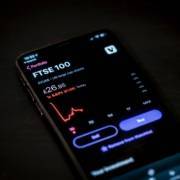Simulations in Action: Universities Utilizing Financial Market Simulations
Financial market simulations are dynamic tools that can bridge the gap between theoretical concepts and real-world applications in the field of finance. These simulations can create an experiential learning environment where students can engage in active problem-solving and decision-making. This article will examine how various universities have integrated financial market simulations into their curriculum and the impacts these simulations have had on student understanding and engagement.
A key player in the field of financial market simulations is CapitalWave. Our catalog offers a range of simulation tools and platforms specifically designed for the university market, allowing students to learn complex financial concepts and theories in an interactive and engaging manner. The software’s approach to simulation design is based on three core principles1:
- Global focus: Simulations are designed to be geocentric, providing a global viewpoint on markets and financial instruments.
- Dynamic and flexible: Simulations account for various macroeconomic outcomes such as Bull, Bear, Flat, Volatile, and Flat/Bull markets. This allows for a wide range of scenarios and case studies.
- Customizable: Recognizing that one size does not fit all, Finance Lab Software allows users to develop and upload their simulations, which align with their specific program requirements and learning objectives.
CapitalWave’s suite of platforms includes the Capital Market Simulator, Forex Trading Simulator, Portfolio Management Simulator, Fixed Income Trading Simulator, Real Market Simulator, and Market Making Simulator. Each of these platforms offers a range of simulations that cover various financial instruments and market scenarios1.
However, the implementation of financial market simulations in university curricula goes beyond simply using the software. Universities often use these simulations to create an engaging and competitive learning environment. For instance, universities can organize internal competitions through student finance clubs, using platform-specific simulations to expose students to different market segments2. Additionally, universities participate in the annual University Trading Challenge held in New York and London, where students can apply their learning in a competitive setting2.
The impact of these simulations on student understanding and engagement is significant. A survey conducted by Simulations & Gaming indicated that users found the greatest advantage in experiential learning, with simulations providing dynamic, interactive exercises that helped develop their skills and knowledge rapidly2. Furthermore, McKinsey & Co. has stated that well-designed simulations can be more cost-effective and yield better results compared to traditional management training programs2.
In the context of today’s diverse student population, financial market simulations can cater to the learning preferences of the Millennial generation, who are comfortable with technology and expect interactive learning experiences. Traditional teaching approaches can be complemented with these simulations, providing authentic learning experiences that resonate with real-world applications3.
There’s a wealth of information about how universities can leverage financial market simulations, but information regarding specific universities and their experiences with these tools is limited. Further research, possibly involving direct outreach to universities or CapitalWave, would be necessary to gather more specific case studies.
Overall, financial market simulations appear to be powerful tools for enhancing financial education at the university level, offering opportunities for experiential learning that can boost student engagement and understanding.











